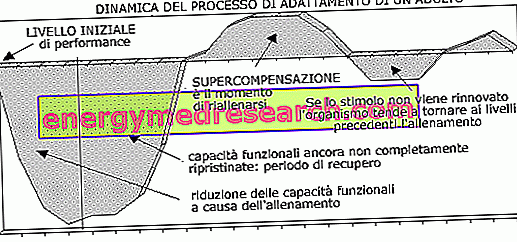
What is Fortacin and what is it used for - lidocaine, prilocaine?
Fortacin is a medicine that contains two active substances, lidocaine and prilocaine . It is used in the treatment of premature ejaculation (a condition in which ejaculation occurs before or shortly after penetration) primary (which has occurred since the beginning of sexual activity).
How is Fortacin used - lidocaine, prilocaine?
Fortacin can only be obtained with a prescription and is available as a spray solution. Each spray delivers 7.5 mg of lidocaine and 2.5 mg of prilocaine. The recommended dose is three sprays to be applied to the entire surface of the penile glans before sexual intercourse. Within 24 hours a maximum of three doses can be used, at least 4 hours apart. For more information, see the package leaflet.
How does Fortacin - lidocaine, prilocaine work?
The active ingredients present in the medicine, lidocaine and prilocaine, are local anesthetics that cause a temporary loss of sensitivity on the contact area, reversibly blocking the transmission of signals to the nervous system. In this way the sensitivity to stimulation is reduced, which helps to increase the time required for ejaculation.
What benefit has Fortacin - lidocaine, prilocaine shown during the studies?
The efficacy of Fortacin has been demonstrated in two main studies, conducted on a total of 256 and 300 heterosexual adult men with premature ejaculation, respectively; in both studies the medicine was compared with a placebo spray (substance with no effect on the organism) over 12 weeks. The main measure of effectiveness was the time needed for ejaculation after penetration as well as the degree of control of ejaculation, sexual satisfaction and stress reported by patients. In the first study, the average duration of intercourse up to ejaculation in patients treated with Fortacin was 2.6 minutes compared to 0.8 minutes in patients treated with placebo; in the second study, the average time taken for ejaculation in patients treated with the medicine was 3.8 minutes compared to 1.1 minutes recorded in the placebo group. In both studies, patients treated with the medicine reported substantially greater improvements than subjects treated with placebo in terms of control of ejaculation, sexual satisfaction and perceived stress. Some patients, who were monitored for up to 9 months as part of an extension of initial studies, continued to show a similar benefit.
What is the risk associated with Fortacin - lidocaine, prilocaine?
The most common side effects of Fortacin (which may affect up to 1 in 10 people) are hypoesthesia (decreased sensitivity) and a burning sensation in the genital area in both men and female partners, and erectile dysfunction (inability to maintain a normal erection) in men. For the full list of all side effects reported with Fortacin, see the package leaflet. Fortacin should not be used by patients who are hypersensitive (allergic) to any of the ingredients of the medicine or to other local anesthetics that are structurally similar to the active ingredients (local amide-type anesthetics). Fortacin must also not be used by people whose partners are hypersensitive to these substances.
Why has Fortacin - lidocaine, prilocaine been approved?
The Agency's Committee for Medicinal Products for Human Use (CHMP) considered that the active substances are a known local anesthetic combination and that the use of a local spray minimizes the amount of active ingredient absorbed and, consequently, the risk of undesirable effects on the entire body. The medicine has had positive psychological effects on patients and their partners, while the side effects are local in scope and are generally manageable. The CHMP therefore decided that Fortacin's benefits are greater than its risks and recommended that it be approved for use in the EU.
What measures are being taken to ensure the safe and effective use of Fortacin - lidocaine, prilocaine?
A risk management plan has been developed to ensure that Fortacin is used as safely as possible. Based on this plan, safety information has been included in the summary of product characteristics and the package leaflet for Fortacin, including the appropriate precautions to be followed by healthcare professionals and patients.
Other information on Fortacin - lidocaine, prilocaine
On 15 November 2013, the European Commission issued a marketing authorization for Fortacin, valid throughout the European Union.
For the full EPAR of Fortacin, consult the website of the Agency: ema.Europa.eu/Find medicine / Human medicines / European public assessment reports. For more information about treatment with Fortacin, read the package leaflet (also part of the EPAR) or contact your doctor or pharmacist. Last update of this summary: 09-2014.



